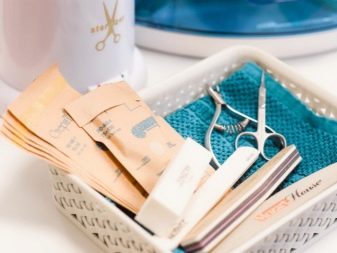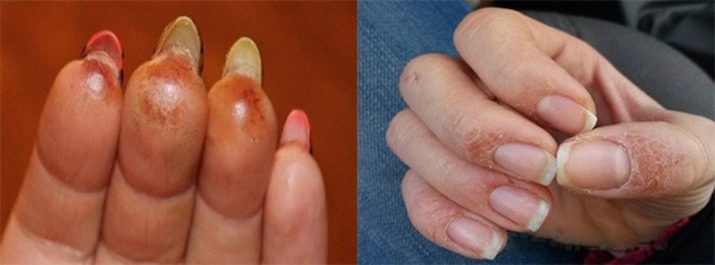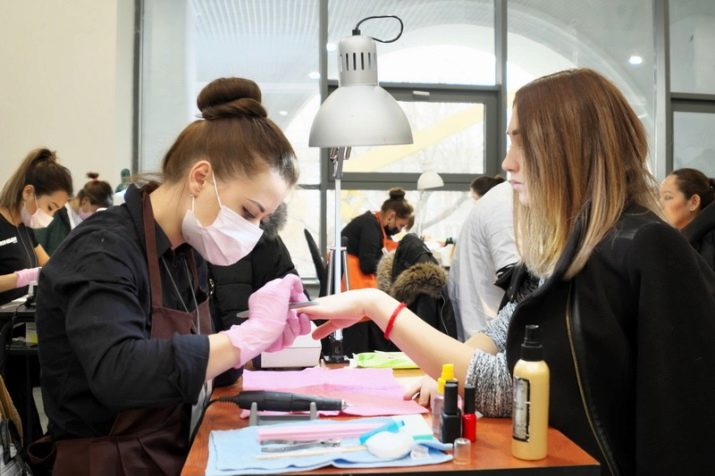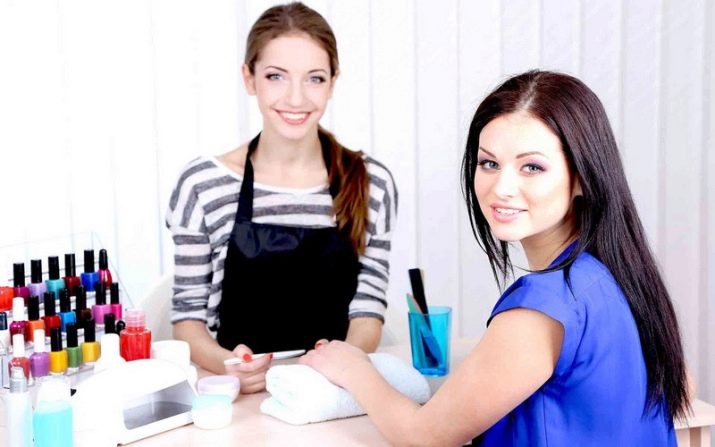Is nail extension harmful or beneficial?

Every year manicure services in our country are becoming more and more popular among the female population. According to marketing research, a woman annually spends an average of 5 thousand rubles to put her nails in order and keep them in a presentable condition. And this is only the lower bound of the indicators. The list of services of nail salons is very diverse, but nail extension is considered the most profitable procedure. Any modern salon is now unthinkable without the provision of this service, since it is in high demand among clients.

Pros of building
Having beautiful and well-groomed hands has become as much a necessity as a regular haircut and a visit to a beautician. Hands are the calling card of any woman, and in order to look no worse than others, people are ready to spend money. The idea to build up artificial polymer nails came to us from the United States of America, where this technique is successfully practiced, firmly entering everyday life 50 years ago. It is much easier to care for artificial nails, and for those ladies whose nail plate is not ideal by nature, or when thin and weak nails cannot be grown to optimal sizes, extension is just a panacea.

It is worth noting that at present, men who are interested in their appearance as part of their image, profession or status have begun to turn to nail modeling services.
The procedure for artificial modeling of nails has a number of undeniable positive properties. Let's take a closer look at what these benefits are:
- the use of polymer materials allows you to increase the length of the natural nail, significantly strengthening the nail plate itself;
- using certain techniques, it is possible to correct the shape of the nail in the event that there are any hereditary defects or traumatic consequences, and it is impossible to correct them otherwise;
- the perfectly executed extension procedure even helps to visually correct the shape and length of the fingers;


- the problem of broken and bitten nails is radically solved, moreover - artificial nails wean their owner from the addiction, because you want to admire beautifully made marigolds, and not gnaw them;
- polymer nails help many women get rid of complexes that they often have in connection with ugly nails;
- sometimes an artificial nail acts as a kind of implant in case of extensive damage to the nail, when it takes time for it to grow and not cause pain.


The beauty industry owes much to the birth of polymeric nails to dentists. Through trial and error, manicurists came to the conclusion that acrylic-based dental materials are most suitable for nail modeling. The first preparations for building up were acrylic powder and liquid for its polymerization. Today, in addition to acrylic, a special gel, shellac, fiberglass is used to model the nail plate. Each material has its own characteristics, not only in the application method, but also in the characteristics of the finished result.

It is definitely impossible to determine which material is better. Each of them has its own advantages and disadvantages. For example, when creating acrylic nails, they require more time and skill of the master, but in the process of work you will have to endure the unpleasant smell of polymerizing liquid. Gel-extended nails have their own peculiarity - polymerization of this material occurs under the influence of ultraviolet rays, and you will not experience unpleasant odors during the procedure.
But when removing such nails, solvents are used in large quantities, and here you cannot do without odors.

Minuses
The procedure for extending the nail plate, in addition to its advantages, also has some disadvantages, which, of course, you need to know about before deciding whether to do such a manipulation for yourself or refrain from it. Most often, troubles arise not due to the fault of polymeric materials, but due to the insufficient qualifications of the masters performing the build-up. In the process of work, the master needs to take into account many nuances, and for this he needs to undergo specialized training so as not to unknowingly harm the client.

Of course, a professional will ask for certain money for his high-quality work, and it is possible that his tariffs will be an order of magnitude higher than those of self-taught masters. But as you know, a miser pays twice and hurts his nails himself in the hope of saving money.
If the building technology is not followed and the use of low-quality polymeric materials, the consequences after performing a low-quality procedure can be very different. Let's list the most common ones.
- Infection of the nail plate. The loose adhesion of the polymer to the nail plate leaves a small gap where moisture and dirt get into when washing hands. Sometimes it happens that the nail plate is forgotten to disinfect before applying polymeric materials. All these reasons are the culprit for the growth of bacteria and algae under artificial turf. Outwardly, this situation is manifested by the appearance of green or black spots under the extended nail.

- Thinning or injury to the nail plate. Before applying the artificial polymer composition, the nail must be slightly sanded with a file to remove excess grease and level the surface. And when carrying out corrective work, it is often necessary to cut off the remnants of polymer materials. If you overdo it, the nail plate can be thinned, it will become soft and thin, like paper.Sometimes self-taught craftsmen can pull off your artificial nail with forceps, while removing the layer of your nail plate. You will not feel pain, but your nail will be noticeably thinner and softer.

It is useless to apply materials on a thinned plate, since they will not be firmly attached to the nail, and you are guaranteed peeling.
- Trauma due to excessive nail length. With the wrong ratio of the size of the nail bed and the length of the artificial nail, you can get a very significant injury in the process of wearing polymer nails in the form of a deep fracture of your nail plate. If the so-called lever of the free edge of the nail is too long, then with the slightest carelessness it will break off part of your nail plate on the opposite side. There have been cases when your nail was simply torn off the nail bed. This is a very painful injury, since a person has nerve endings under the nail plate.


- Sawed-off nails. Often, to simplify the procedure for removing polymer materials from the nail, manicure masters use electric machines with various attachments in the form of a so-called cutter. When cutting material, a nail technician can damage your living nail by sawing a transverse groove on it. This happens quite quickly, since the cutter removes much more in one pass than a simple file. In addition, during this procedure, the nail plate heats up very quickly due to friction, and you may feel pain. The nails damaged in this way take a long time to recover, they are prone to breaking and cracking, and the transverse grooves will cause the materials to peel off during build-up, which is very harmful for a living nail.

- Traumatic cuticle injury. In preparation for the extension procedure, the master must treat your cuticle. Most often, it is removed by circumcision with special tweezers. In this case, injury is very likely.
In addition, you need to be sure that the master uses sterile instruments, otherwise infection with hepatitis or HIV infection may become a reality for you.


- Allergic manifestations. Such troubles can happen when a master begins to mix products for modeling various manufacturers, arbitrarily begins to change the proportions and consistencies of drugs, or violates the technology of work. For example, there is a rule - do not touch the skin and cuticle with chemical components, if violated, irritation of the epidermis or even a chemical burn may appear.

The listed disadvantages can be completely avoided if the work is done efficiently, without violating the technologies for using materials. As a rule, trouble most often occurs with self-taught craftsmen who work from home at home or with a client.

In the salon, such disregard for the health of the client can cost the reputation of the entire institution, therefore, all conditions are created there for the safe execution of the procedure.
Common myths
Since the inception of the service of modeling nails with polymer materials, it has had supporters and opponents. Around this topic, various myths and conjectures have developed about how harmful it is to the health of the body to use artificial chemical materials. Polymer manufacturers provide explanations and comment on truth and speculation from a scientific point of view.
- Polymeric materials for modeling spoil their nail plates - such conclusions are often heard from the mouth of a layman. The American chemist Shun Douglas, the author of a scientific work entitled "The structure of nails and chemical products", spoke about this in his time. He writes that it is not the materials for modeling that spoil natural nails, but the masters. And it's hard to disagree with this.It happens that customers do not distinguish modeling with polymers from the usual gluing of plastic tips, which can be bought at a stall selling low-quality cosmetics. Tips can be colored, with pictures, a tube of glue must be attached to them. The glue does not adhere well to the tips, but it damages the nail plate well. Sometimes, in order to glue the tips more firmly, they use a universal glue for household work, which glues everything - from paper to metal.
The results of such creativity are shocking - the nail plate is simply burned through. And, of course, those who invented building up with polymers, who did not convey information about what kind of procedure it is, and why it cannot be repeated on their own in their kitchen, are to blame, of course.


- Materials for polymer build-up cause oncology - this myth was debunked back in the 70s in the USA. As already mentioned, the progenitor of polymers for nail modeling was the materials that were used in dentistry. Over time, they were replaced by more plastic products, since those used for setting fillings were too hard and led to breaking or chipping of nails. However, the basis of these materials is the same. Agree that the materials used by dentists have passed hundreds of tests and studies, confirming their non-involvement in oncology.

- Pregnant women should not come into contact with polymeric materials. Let's revisit the research by Douglas Shun of the United States. Studies have shown that polymers are no more harmful than regular nail polish. And although they contain components of toluene and formaldehyde that are harmful to the fetus, their amount is present in such micro doses that there is no danger for either the mother or the child. Of course, the master (especially if the client is pregnant) during the procedure must comply with sanitary and hygienic standards - wash hands, do not eat at the workplace, close containers with chemicals with lids.
The only caveat during pregnancy may be the fact that due to hormonal characteristics of the body, the moisture of the nail plate may increase, and polymer adhesion will be reduced - the nails may not adhere well.

- Dust from polymeric materials is harmful - this opinion takes place. Professionals say that nails are created with a brush, not with a file. The higher the skill and professionalism, the less you have to cut and receive dust. Inhalation of any dust is harmful to our lungs, so it is necessary to take precautions - wear a respirator and clean your workplace in a timely manner.

Before you decide for yourself the question of nail extension, consult with the masters, ask them all your questions. It is better to get information from a professional source than to believe rumors and speculation.
Professional advice
If you become the owner of extended nails, you must remember that you need to treat them with care so that they do not become a source of injury for you. Artificial nails do not need any special additional care, but the skin of your hands does. Professionals advise to soften the skin of the fingers and the cuticle area by rubbing in special oils or cream. This should be done daily, and the procedure takes only 1-2 minutes.

After 3-4 weeks, you need to come for a correction. It is categorically not recommended to do the correction or removal of nails on your own. And if you have material detachment or breakdown, you need to get to the master as soon as possible to eliminate this problem, since it can entail more serious consequences.

For information on whether nail extension is harmful, see the next video.








